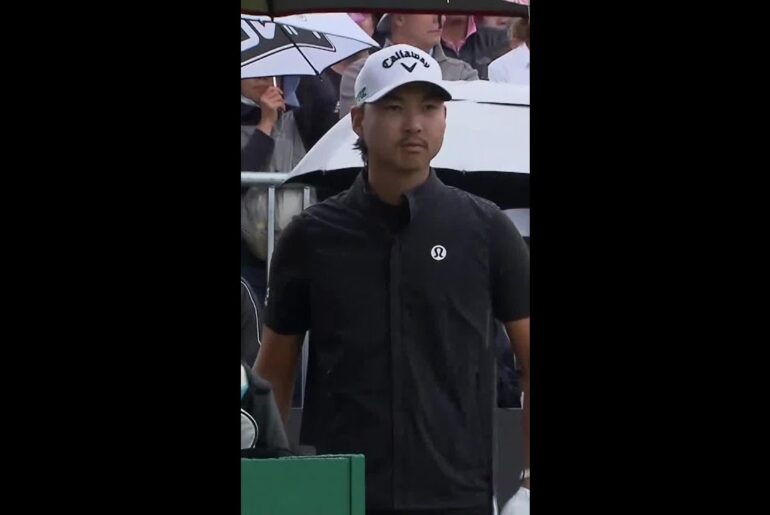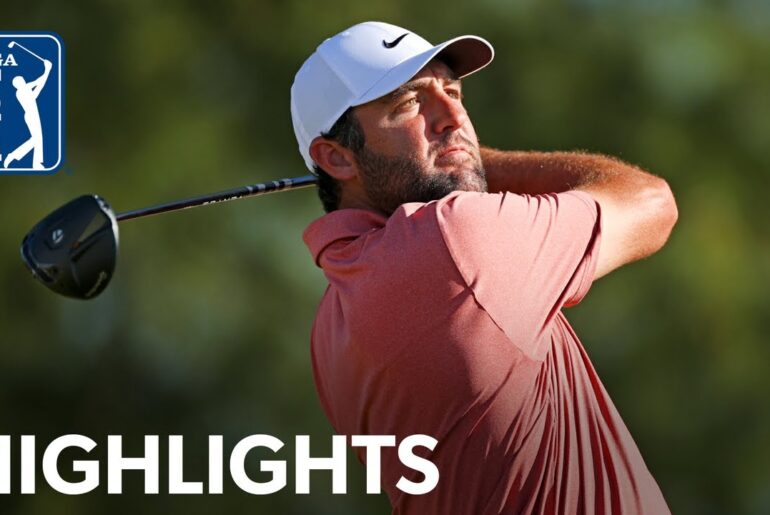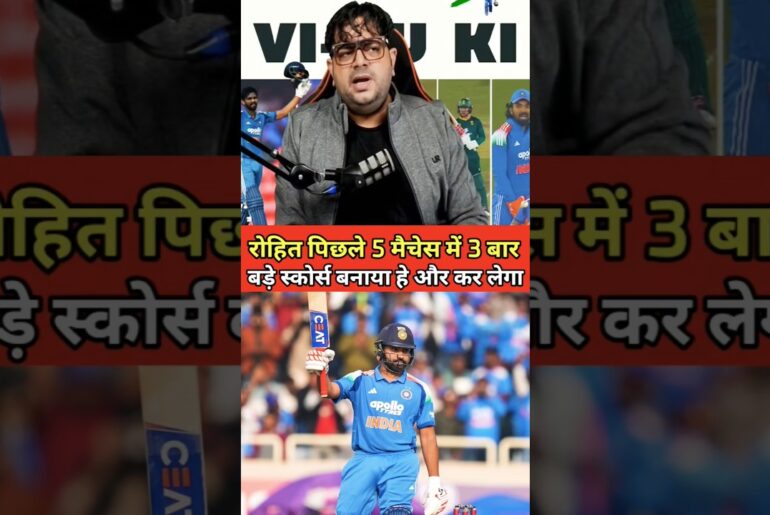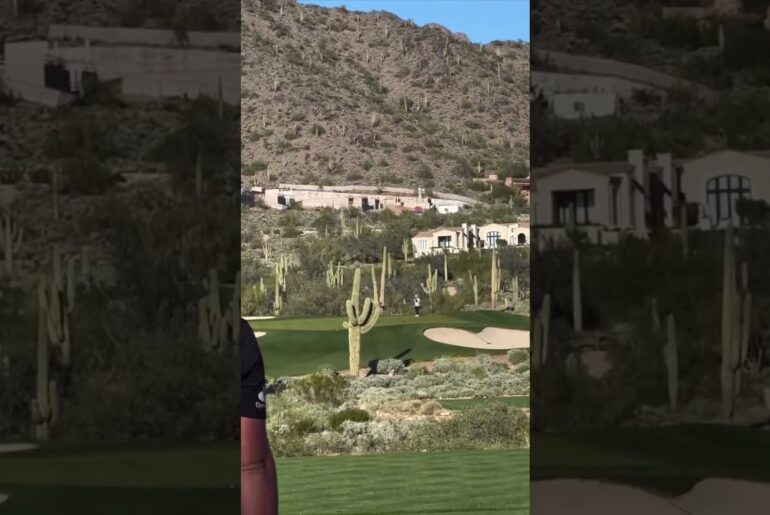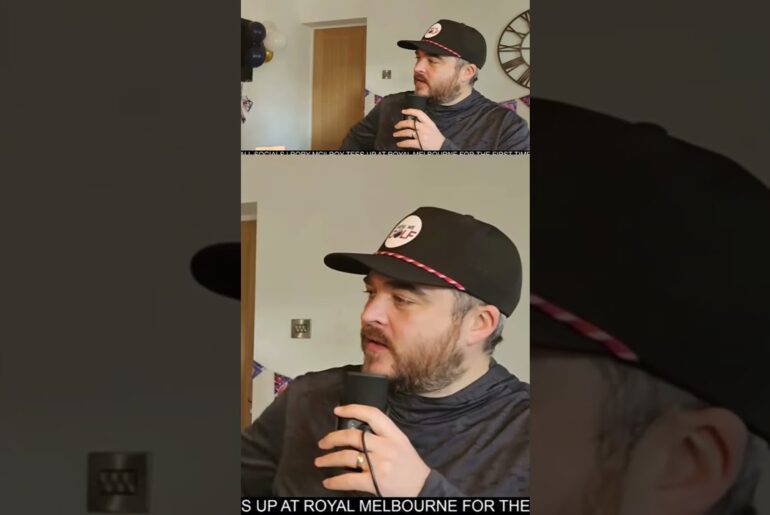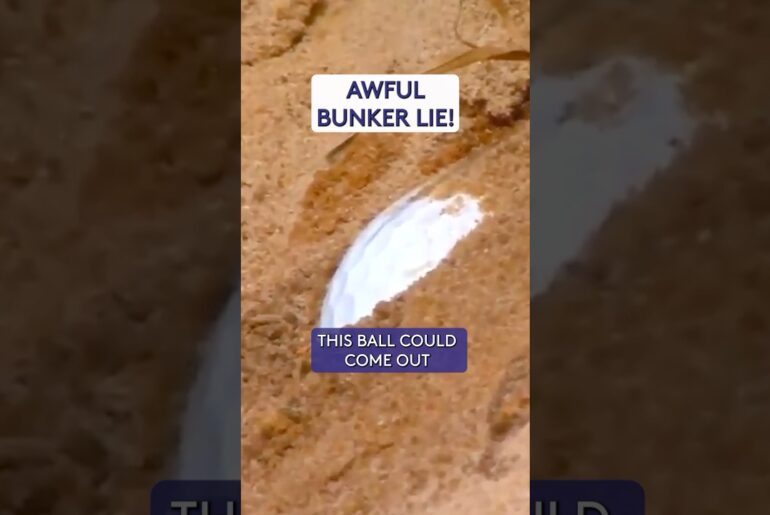This week we hear the great story of how Noah Montgomery went from being an officer to coaching some of the best players in the world, like Gaganjeet Bhullar and John Catlin. He shares candid stories of being on tour, how players have changed the DNA of his coaching through the years, where he starts with players and what he focuses on the most.
Learn more about your ad choices. Visit megaphone.fm/adchoices (https://megaphone.fm/adchoices)
[Music] Hi, this is Tony Rogerro, the douche sweeper. You’re listening to the Tour Coach podcast, giving you insights into golf instruction at the highest level. From on the PGA Tour to our learning center at Frederica Golf Club, [Music] every now and then I get a couple down days and I’m sitting down here in the Keys and going to have a drink of rum here shortly. But before I do, I thought I’d uh sit and talk to somebody who I’ve gotten to know a little bit over the over the last couple months. And his name’s Noah Montgomery, and it’s an interesting story. He’s teaching one of the best players in the world, John Catelyn. He’s got an interesting story of how he’s gotten to where he is. And one of the things I enjoy doing with this podcast is always to shed light and to spotlight some people that are doing some amazing things and some interesting things that maybe not everybody in the golf world sees or or pays attention to. So, Noah, thanks for sitting in with me. And man, you got lots of success. Congrats. Thank you very much, Tony. Hey, it’s uh, you know, no secrets, just hard work. It’s pretty upfront, you know, and that’s that’s part of probably what I like the most about it. Well, I want to start with where you started because I I got introduced to you or was made aware of you by our good friend Brady Riggs. Brady and I were talking about one evening I was on the road and we were having a conversation about players and we were talking about the development of teachers and what it takes to become a good teacher and he brought your name to my attention and I I I was aware of John Catelyn and how he had kind of burst on the scenes but didn’t know much other but he told me a little about your your background. I mean you were a you were a police officer if I’m not mistaken. Yes. Yes, sir. I was in Oakland if nonetheless, right? Yeah, I was uh what they call a Oakland crime reduction officer. Basically, we work street level narcotics in the city of Oakland. Gee, that’s it. That’s what I did. And hey, you know what? I’d go back and do it again tomorrow. It’s a great profession. I know it gets a bad rep. Uh I know times are changing, but I can tell you this. There’s a lot of good work being done out there. I agree 100%. And I’m one of I mean I think that police officers and fire you know and firemen I mean are vastly underappreciated and you know underpaid and furthermore people that we won’t go on a political rant here but you know right everybody talks about bad about the police until they’re in trouble and they need someone for help and then this the first person they call right. Well yeah and you know what I mean I get it. I I get both sides of it and yeah, maybe that’s what made me successful at being a policeman. I mean, I hear you loud and clear. People, you know, shouldn’t do certain things, right? But boy, the minute we start trying to put everybody in the same bucket, we could be in trouble. I mean, and if we start there, then what if what do we do with the golf coaching world? Are we all we’re all in the same bucket now? You know, Tony, your your lessons are just terrible, right? Noah, you don’t know what you’re doing. Just terrible. There’s something agree with you on that. Well, but you know, I But see, I necessarily, you know, maybe and that’s maybe that’s why I’m having some success. I I look at everything at face value, Tony, and I I take the good and if it works, great. And if it doesn’t, I just move on. I don’t I don’t think wasting any time on the on the negative portion of that benefits anybody. I agree. What happened? Yeah, I’m just being honest. Like it just No good. No good. How did you go from being on the streets of Oakland working narcotics to teaching the best some of the best players in the world? Uh, I definitely am a different type of personality and and basically to give you the the short version of that. I was medically retired for a pretty serious injury on the police department in Oakland. Okay. And I had to go to an arbitration hearing, which is, you know, the people that know will understand what that means. And they were retiring me out of something that I was very passionate about doing. And and when I say that, I mean, man, I was I was a pretty good cop. They would say I was a great cop. They told me, “Well, you don’t have any stipulations on your retirement, and that means I could do anything but work patrol, which I didn’t work very much patrol to begin with.” And they said, “But one thing we wouldn’t do because it would look bad, is don’t do golf.” And I said, “But it am I allowed to do golf?” “Yeah, but we don’t recommend it.” Well, that’s all it took. Well, why would they not want you to do golf? Well, because it might look bad on a videotape or something and you know, you could be misconstrued as a faker or something. And you know, the MRIs show completely different Yeah. than that, right? But once again, it’s a politically correct thing and and I just, you know, it started with one small basket and I could only get through about 10 balls and it just grew from there. And then I was trying to, you know, I was playing golf, helping with my kids. I also have five other businesses, working my tail off and I couldn’t get a golf course to let me play nine holes, pick up my kids, go do, you know, take care of my business and come back. So then I joined a country club. When I joined the country club, I mean, I was practicing, working on my own game, and that was it. All of a sudden, you know, because I guess personality, I had my own golf cart and I would haul these kids around to play golf cuz, you know, they couldn’t rent a cart and they didn’t want to walk, right? Push comes to shove, one of the older boys, you know, after getting in long drive contests and things like that, then he comes to me and says, “I want you to help me get prepared for the, you know, the first tea open thing where they play with the senior players.” And I told him no at first and then I did help him. And you know he was being coached by somebody. But once again, you know, details, right? No detail work. I think probably worrying about the wrong thing. There was a really good podcast by Butch Harmon. There’s no perfect swing. I agree with that. I really agree with that. I think if your mindset is correct and you you kind of halfway got things going right, you you’ll do really good stuff. Long story short with that, Tony, he went out and fired 66 and the pro we were playing with, I won’t mention his name, fired 73, you know, and it’s a beautiful story, but long story short is the pro told him, “Yeah, what that guy’s telling you is a lie and you should do this.” That was my first taste of golf. Yeah. Welcome to our business, huh? Yeah. And and I looked right at the pro. Now, you gota you got to understand, I didn’t play high school golf. I didn’t play junior college semi-pro nothing right and I said sir with the utmost respect I know you’re you’re on the senior tour you’ve won once on the PBA tour with the utmost respect that guy just shot 66 you just shot 73 right I don’t think we have much to discuss so that was my first taste and it’s in my opinion man I think it was the best thing for me oh no it was the absolute best thing And you know, meeting Brady, another godscent, cuz I don’t I’ve never conferred with anybody on coaching. Not one single person have I conferred with. I was very fortunate to be helped by an older gentleman that played on the PGA Tour way back when. And, you know, with my own game and explaining how to do this and how to do that. And, you know, I did what everybody else did, Tony. I went around in the very beginning and I think I racked up about $60,000 in lessons, but I couldn’t play any better than when I started. I ch kind of changed my mindset and I said, “Okay, I got to go at this a different avenue.” And, you know, I got to understand it a little bit if I want to get good. And and and I did. I you know, I got down to single-digit handicap, but that was something I was doing. And then I coached my second student to the women’s US Open, you know, and and that that was kind of like another aha moment. When you talk about the details and the things you do, what’s some of your belief structure that you believe that’s important? Obviously, nobody there isn’t one perfect swing. I agree with you and obviously I agree with Butch. And Tony, I look at it this way, man. you got some fundamentals and and you you know I’m probably going to get thrown under the bus for this, but I think you got to at least start somewhere neutral. When I say neutral, everybody’s going to jump on this. Well, you can’t have your hands cranked around to the left or to the right too far if we’re just starting out. Yeah. And you can’t have your weight too far back, too far forward. We got to be somewhere looking like a golfer. Yeah. Right. And and I don’t believe that, you know, we’ll use John. I don’t believe that John will look like Tiger Woods. And I also think that I would be very foolish if I wanted to try to get John to do what Tiger Woods does. No question. I I’m not a believer in, oh, hey, let me draw this up on my computer screen here. Look, now this is BJ Singh and here’s your swing. You know, you should look more like BJ. I I think that’s a Get ready, Tony. I think that’s a farce. I agree. I think that that is not coaching. That is not teaching. You have to take who’s in front of you. And you know, I don’t have any original thoughts when it comes to golf. I’m sorry. I I have stole it from everybody I’ve ever been around. I think that’s the mark of of all the great teachers. I think that uh Oh, I don’t have one. I I stole it. I stole it from somebody. I think we have new ways of measuring and new ways of understanding, but I don’t know that I don’t think that players are doing anything necessarily any different, you know. And I think that when you’re especially when you’re starting out as a player or you’re starting out learning the game and a lot of people that are listening to this or either teachers or some and a lot of them are having golfers, some of most of them are probably more advanced. You know, I think you’ve got to have great setup fundamentals and balance and posture. I think those things are tremendously important. I just talked to my good friend Mark Wood for 15 20 minutes a little bit ago talking about, you know, the importance of being balanced at setup, right? And and people people don’t want to do that. And, you know, I brought up an old saying that my old mentor Hank Johnson used to say, that is you can’t confuse comfort with correct, right? And I agree. And well and and you know to add to that whatever we might think is correct that may not produce the shot for that said player correct and and I don’t you know I don’t know who said this I think from my past job and you know you have to be very detailed with what you’re seeing exactly what you’re seeing and be honest you can’t look for something or you’ll find it you have to be open-minded I think when you can make a change that affects five things in a swing and you can do it a relatively short amount of time, I think you’re going to be successful. And and it doesn’t matter if it’s me or anybody else, you know, uh and and I also think, you know, when I started trying to figure out the swing, I was looking at, you know, Lee Trevino, uh Jack Nicholas, players from the 60s. I probably have every book known to man. I can tell you when the swing left thing hit the scene on the PGA tour because I have the book that was written by the guy that started that. I also think that we probably spend a little too much time with closure rate all of that. I mean, let’s just get right down to the brass tax, Tony. You deloft it a little bit, that helps your path and you rotate like heck, it’s going to come online. It’s it’s Newtonium physics. It’s Newtonium physics and we don’t have to complicate it. Right. Right. turn the light switch on and enjoy the light. It’s there. I mean, it’s just there. It’s there. If you you know, I I’ve banged my head and and I’ve asked people point blank, could you please help me? Could you please tell me what is what? And you know, you don’t get a straight answer. I I’ve asked you some pretty good questions and I got straight answers. Same thing with Brady Riggs. Straight answers. And you know, Brady calls me the bubble boy because I stay in the bubble and I and I coach what I coach, but I I’m not bucking the system. I’m not a outlier, per se. I just believe in the ball is telling us what we need to do if we pay attention. You know, I got I got I got nothing fancy, man. We hit marshmallow range balls and I do my coaching with that. I’ll tell you a big turning point for me was at the PGA Championship when a guy like yourself says, “Hey, how’s it going, Noah Montgomery?” And I mean, I’m I’m blown away when four European tour coaches come up and shake my hand and introduce themselves. I’m kind of blown away. I mean, like, I don’t even know what to say to that other than can I get back to my spot on the back of the range and keep teaching because, you know, I do think that people are are missing some of it. And then, you know, you got Sweeney on the putting. I think he does a great job. I’ve I’ve seen his stuff. I got I was fortunate to meet him. I think he does a good job. Radar Golf, good job. I mean, I think it’s the fundamentals, man. It’s when we get outside of the fundamentals and we start getting, you know, throwing clubs over the line and whipping and bucking and diving, you know, I think that’s where we get in trouble. Just my opinion. Like I said, that could probably get me in trouble. So, how did you meet John C? How’d you start working with him? How did Interesting to me was when Brady and I were talking about you and he was telling me about the job you’re doing was you know how many players from all over the world you have and you’re based out of, you know, this little place in Oakland. How did this come about? Well, yeah, I’m I’m based out of a place up in Northern California called The Ridge. Single owner golf course. Very fortunate. They allow me to build a private practice facility at the back of their range. A beautiful golf course. have had five five LPGA events there. Great set of people there. How did it all come about? Well, Paige Lee was my first real successful student. Really hot prospect. She grew up around the same time as Bryson did. They played a lot of junior golf, same events, that kind of thing. I was working with her and there was success. John came out, wanted to join us. And you know, at the time it was a little hard for him. He was missing the ball, Tony, sometimes both ways. One thing about John is the desire and the grit. So that young man absolutely has no quit in him whatsoever. But at the time, Paige Lee was 92 lbs, soaking wet, hitting at 245, and doesn’t miss a fairway. I think after nine holes, she was 500 under par. That pissed him off. That pissed him off, especially on their home track. And I think that’s what started it all. So anytime I have a bad day at coaching, I blame both of them, John Catlin and Paige Lee. I said, “You are the only two reasons I’m still doing this.” And you know, now it’s grown. I got so many players that I’m so proud of the work they put in. I’m a small portion of that because I I’m a firm believer that any success that you have on a golf course comes from with inside of you. Maybe I provided the information. Maybe I helped you out and gave you some counseling at the right moment, but how many shots have you ever hit for any of your players in the middle of the battle? None. They got to stand they got to stand up there and do it. Male, female, it doesn’t matter. They got to stand up there and deliver it like a golfer. That’s not an easy thing. I think it’s very overlooked. That’s kind of how that started. And then John, you know, and look, people don’t know this. If your player has friends, their friends will take a look at you. Had another player take a look at me. And you know, I don’t know. Lo and behold, he had four Asian tour wins one year, two years into our coaching. I mean, I don’t know. Is it remarkable? I wouldn’t even know, Tony. I I haven’t been in the business long enough to be able to tell you what what. I mean, 13 years. I think that uh if your players get better and your players are winning and they’re improving, you’re doing a great job teaching. That’s in the end our job is to help the person in front of us. Right. And yeah, why where do we miss that, Tony? Isn’t our job like don’t don’t harm anybody turn them out better than when they came to us. Right. Right. Right. And that’s really all that matters. And I I think the information’s far less important than that. I think I I don’t think you can make people consistently better week in week out. Have a track record of making a lot of people play better whether and they achieve and they go to play high school and then they go to play college and some of them will play the tour and then you’ll get some tour people and if you’re if you’re in general making people better, you know, you may say it a different way or you may word it a different way and communicate it however it needs to be communicated. I think we get too hung up on verbiage and the terms people use and and there’s people that go on social media and then they use some of these terms and then they try to well see that so and so is a whatever and look at these terms he used and I think in the end it’s about making people better. How about this? I’ll give you a good chuckle. I I’m not even sure what any of those terms now publicly this is my opinion. I don’t know what they mean. Of course, I know what they mean, but I don’t think I can teach people by talking about external and internal and supernation and pronation, flexation and deviation. I think half the people on the planet get lost in that unless they’re a medical doctor, right? Why not feel versus real? I mean, because we all do it. We all do it on the lesson box, but the minute we get around another teacher or anything, you know, then our vocabulary increases, you know, in volumes. Well, mine doesn’t. That’s probably why I get I get looked that funny. You know, hey, hit the inside of the ball. Oh, no. You don’t ever want to do Well, yeah, but the feel produces the right shot and the right spin rate. The feel, whether it’s even possible or not doesn’t really matter. I think it’s irrelevant. Tony, I’ve only been hemmed up by one coach and basically I used what you said to be honest. You tell me. I got 30 wins in four years. Okay, we’re doing it the wrong way. I got nine kids going to Optimus. I’m proud of that. I’m proud of those kids and I’m not an easy guy to get along with and they work hard. I’m just a golf coach just like the rest of them and I’m trying to I’m trying to do better by people that have entrusted me to help them and I think boy if you stray too far from that probably it’s probably probably not going to turn out good for you. I agree. And I think that I think the one thing that that I obviously your success with players, but also your willingness and your your wanting to keep learning and keep improving, right? You know, the question Well, I want a lesson from you, Tony. I want I want to go up there and watch you teach because how would I know? That’s the other part that I think people miss with Okay, I’m vastly overrated. You don’t No. Well, but I’m probably the dumbest guy on the planet. And I will give you second closest because I know that’s your mantra. But I guess the thing is is like with Brady, why we clicked I think why we really clicked off is I mean I’m just honest. I can make a golf ball do what you want it to do in the air and I know how to adjust your swing and that part and I know to look at a better player, you know, and where most guys are trying to throw spaghetti on the wall, I look at it differently and I say, “Yeah, the ball’s about a half inch too far forward.” I mean, numbers, whatever it is, but you move the ball back just slightly and it works, or the ball’s too far back and we move it forward. I mean, don’t look for stuff that’s not there is my big sense. Man, when you start doing that, you you’re not gonna win very much. And I think that there’s a there’s different teachers for different folks, right? Like I always say this, like, you know, we talked about that. I agree. I’m on the PGA tour a lot, right? And but like there’s guys that are great players like Chris Como and Mike Shai are the perfect people for Bryson, right? I mean like my personality and the way I explain things wouldn’t probably work right with Bryson. So he’s got the right and Chris Ko and I are friends. He’s one of the people I respect most out there. But you know you take a you know you take a Zack Suker, you take a Rick Lamb or you know when I worked with Lucas and you take Lucas like I mean you know certain people’s communication skills work best with certain people and certain styles. And I think that’s why there’s so many different styles out there. But I also think that’s why it’s not a good idea for teachers to say so and so doesn’t know what they’re doing, right? Or that that Oh, no. I don’t. Yeah, I agree with you 100% because even though there are some that don’t know what they’re doing, but still, you know what? Here’s the thing, and I’m glad you brought that up. I look at it this way. Okay, I use you as an example, Tony. This would be my question. Okay. Can you rattle off the top of your head how many current PGA Tour players and how many D1 kids that you’ve taken all the way through? How many roughly roughly I’ve probably taken from high school to D1 over I mean a hundred kids or more something. Okay, then I probably should shut up and listen to you. Now whether I like the message or not, guess what? You’ve done it more times than me and I’m probably going to learn something if I pay attention. I think where we get this bad rap is where you get these guys out there bashing everybody. Yeah. And it’s only because they want the attention. They haven’t coached anybody. Yeah. Those are my my complaints with the people. There’s a lot of people that are smart. But I think there’s a big difference between a professional presenter and a professional researcher and a professional teacher. Yeah. I I and I would agree. I’m not the guy you want presenting. I’m probably the guy you want in your camp. I’m a good motivator and we can make effective changes. You don’t want me presenting to a bunch of people. It’s not my bag. I can present, but look, I’m not going to give you all the medical terms. I’m not going to do all that. I’m going to make it simple because I’m a teacher at heart. And what I want to do is make an effective change. And you know, people have come to me when they’re at their end of their cord. You know what? It’s kind of funny how we go to the top from there. I never give up on anybody. anybody. Even there’s coaches that bash everybody. You can bash me. It’s okay. Bash me all you want. You know what? I’ll only get stronger and and I’ll learn from it. If you don’t learn from every situation, if you don’t learn from every golf ball struck, then what are we doing, right? You know, and I’m a firm believer in that. So, when I say that, yeah, I mean, right. Yeah. Ball doesn’t lie. And and guess what? Results don’t lie. So, if you get around a bunch of teachers, you should pay attention. No way, Tony, can you know it all. No way can I know it all. Brady doesn’t know it all. Nobody. Butch, one of the most successful coaches ever. I mean, you can’t know it all. Now, I you know, yeah, I’ I’d take the notes down on a napkin if I was sitting in that circle, but you know what I mean? Is you got to pay, you got to pay attention. And I think people get too full of themselves. And maybe it’s social media. I mean, I put on my social media when my kids go to Optimus because I’m proud of them. I I’m no care I don’t do that to be braggadocious. My kids actually talk about it, you know. I think with kids you have the douche sweepers. I have the tribe. It’s part of the business now. I mean, I don’t like uh I’ll be my pet peeves on social media are the ones that put up every round what somebody shoots, right? Like Yeah. And then and then I’m b you know we’re blessed and gratitude and all this and like I mean like if you know I get when a guy wins or has a breakthrough we and kids it’s a different when they win I think it’s awesome. I think it motivates them and it empowers them because that’s look that’s their world now. Right. Right. And they they’re trying to they’re trying to outdo the next person just like we did in whatever endeavor. You know I I don’t know. I mean, I got one for you, Tony. I had a coach tell me, “Well, you don’t put up what your methodology is on on Instagram, so how could anybody trust you?” And and you know, the funny part is I was like, “Okay, yeah, I see your point. Thanks.” And it diffused it. That’s just I don’t ever put I don’t ever put hardly at all what I’m working on with a player, especially a tour player, because I’m never gonna give somebody who has never taught anybody in their entire life the opportunity to say something or take a shot that might plant a seed of doubt in a guy that’s playing for a living because it’s too easy to do, right? People do that. Yeah. And you know, I think there’s no consequence for them, right? There’s no consequ whatever their their thing is. Zero. Well, I got one for you and you’re gonna laugh. This is how open book I am. And I only remember two of the guys, Radar Golf and Sweeney. I think the other guy works with Brooks and I think his name is Jeff. I’m not sure, but anyway. Okay. So, anyway, we’re sitting at this table, right? And this will tell you who I am. I said, “Okay, I got some masterminds right here in front of me.” I go, “I want you to look at this swing. This is a girl that I’ve worked with for a long time. A long time. And she actually shaped the way I coached probably more than any other individual because and you’ve had this in your career. Whatever I try to change very early on, she would cry. Mhm. She would just start crying because she couldn’t do it. And that was about like oil and water for my personality, right? Because my personality is, you know, get after it and attack. Yeah. And fight it and don’t worry, it’ll be okay, right? Well, she changed kind of my DNA, if you will. I still coach her to this day, but she gets way across the line, she unloads it, you know, shoveling it and coming down to the ball, but she shoots, she could shoot two, three, four under with that. Mhm. And I said, “Okay, guys, how do I change that? How do I help her and and get her?” And they all looked at me like I was crazy. And I said, “It’s an honest question. Never been around this many coaches in my life. Ever. How do you do that?” Here’s the crazy part. Besides Brady and besides yourself, that’s the first time I’ve ever asked anybody about coaching. Period. Best advice, a putting coach, Sweeny. Have a LPGA Tour player do a video message for and say, “Listen to the coach.” You see, now I never thought of that. He’s good. I like Sweenie. Yeah. But you see what I mean though, right? Yeah. Yeah. But just outside of the box. Just outside of the box. Boom. Like that. Never thought of that. I shared the story with her. she started making the change. I think that it, you know, the coaches that all share and exchange, I think it’s a good community, you know, I think it’s and I think it’s healthy rather than the bashing. But know you’re doing awesome stuff. It’s fun to watch. I’ve enjoyed the opportunities we’ve had to chat, get to know each other, and obviously you’re in good hands out there with Brady if he ever comes back from the island. But uh yeah, I I don’t know that he will, but you know, I just I just keep going and you know, I mean, that’s what else are we gonna do? That’s it. One foot in front of the other. If you don’t mind, let everybody know how to find you on social media. It’s great stuff. And so people can reach out and I appreciate you taking the time to sit down with me. Best of luck to you and John and all the guys you got and girls you got playing all over the world. It’s awesome stuff to watch. Thank you very much, Tony. I greatly appreciate it and feel honored to be on this podcast. Thank you so much for listening to this episode of The Tour Coach with Tony Rouiro. If you enjoyed this, make sure to hit subscribe, Apple Podcast, Spotify, wherever you are listening to this podcast. You can stay up to date cuz we have weekly episodes coming your way with fascinating people in the world of golf instruction at the highest level. Make sure to subscribe and stay tuned. If you want to learn more about Tony, head over to do sweepersgolf.com to get all the details on what he’s up to. Maybe you want to see him grab a lesson or go to one of his camps, pick up his book, Lessons from the Legends. You can do that there. If you want to see Tony in action with some videos and other content, head over to golfciencelab.com/tonony to get more info there. This episode was powered by the Golf Science Lab and was edited, mixed, and produced by Just Hit Publish Productions. [Music] We go into year two of the tour coach. It wouldn’t be possible without the support of all our sponsors. And I’ve had some great ones. And one of the things that I’m most proud of in my career and in my business is the fact that all of my relationships here and all these sponsorships have been long time long withstanding relationships. Haven’t jumped from sponsor to sponsor and manufacturer to manufacturer. And I’ve always prided ourselves in special relationships. and when people work together, support each other, and we’ve all put out great products for the benefits of everybody else. So, I want to give a special thanks to these folks that have been with me for such a long time, and that would be the folks at Shrixon, Cleveland Golf, and Zexio. Couldn’t ask for a better manufacturer to be aligned with. And not only do they put out great product and great support, but they’re first class people, and they believe in what we’re doing here on the tour coach and with the Deuce Sweepers and also Vineyard Vines. Ian, Shep, TJ, and all the folks at Vineyard Vines. It’s hard to keep me looking good, but they do a fantastic job, and they’re like family. They support everything on the Deceers, and we’re so proud to be affiliated with and support the folks at Vineyard Vines. So, if you’re out there, you’re listening to the tour coach, please support our sponsors, Stricks, Cleveland Golf, Zexio, as well as Vineyard Vines, and keep listening and keep enjoying hanging out with us here on the tour coach.


